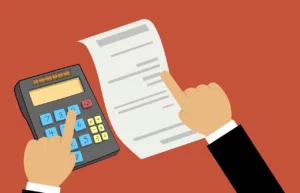- A checking account, or ‘current account’, is a type of bank account designed for everyday financial transactions, offering features like debit cards, checks, online banking, and direct deposit.
- Checking accounts are very important for convenience, security, financial management, and digital payments, serving as a cornerstone of American financial life.
- Statistics show that a vast majority of American households own checking or savings accounts.
- Debit cards are a preferred payment method for many, emphasizing the significance of checking accounts in the U.S. financial system.
What Exactly is a Checking Account?
A checking account is a financial cornerstone for millions of Americans, providing a secure and convenient way to manage everyday finances.
It is a type of bank account that allows individuals to deposit money, withdraw funds, and perform various financial transactions. These accounts are typically used for everyday expenses, such as paying bills, making purchases, and receiving paychecks.
-
- Debit Card: Most checking accounts come with a debit card, allowing account holders to make purchases and withdraw cash from ATMs.
- Checks: Traditional paper checks are still a part of many checking accounts, though electronic payments have become more common.
- Online and Mobile Banking: Accessing and managing a checking account has never been easier, with online and mobile banking apps providing 24/7 access.
- Direct Deposit: Many employers offer direct deposit, which allows paychecks to be automatically deposited into a checking account.
Key Features of Checking Accounts
Checking accounts play an important role in the financial lives of Americans for several reasons:
- Convenience
Checking accounts offer a convenient way to manage day-to-day financial transactions. With easy access to funds through debit cards, online banking, and ATMs, individuals can quickly pay bills, make purchases, and cover unexpected expenses.
- Security
Keeping money in a checking account is generally safer than storing large sums of cash. Most banks provide FDIC (Federal Deposit Insurance Corporation) insurance, which protects deposits up to $250,000 per account holder, per bank.
- Financial Management
A checking account serves as a valuable tool for budgeting and financial planning. Regular account statements and online banking features help individuals keep track of their spending and monitor their financial health.
- Digital Payments
In an increasingly digital world, checking accounts facilitate various digital payment methods, including online bill pay, mobile wallet apps, and person-to-person payment services like Venmo and PayPal.
Checking Accounts – the Statistics
- Checking Account Ownership
According to the Federal Reserve’s Survey of Consumer Finances in 2019, approximately 93% of American households had a checking or savings account. This indicates the widespread use of these accounts for financial management.
- Preferred Payment Method
A 2020 survey by the National Retail Federation found that 42% of American consumers prefer using debit cards for in-person and online transactions, emphasizing the popularity of checking account-linked payment methods.
- Online Banking Usage
The American Bankers Association reported in 2021 that 73% of U.S. adults use online banking services, which are typically associated with checking accounts.
Concluding Thoughts
In summary, a checking account is a fundamental financial tool that provides convenience, security, and financial management capabilities to millions of Americans. With features like debit cards, online and mobile banking, and direct deposit, checking accounts have adapted to the digital age, making everyday financial transactions more accessible than ever.
The statistics and data figures presented underscore the widespread use and importance of checking accounts in the United States’ financial landscape.
